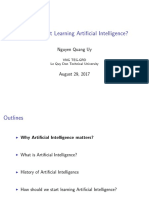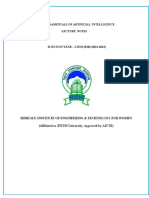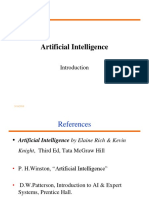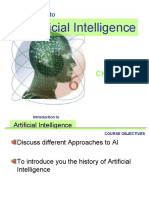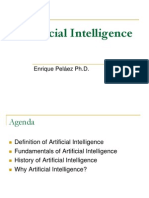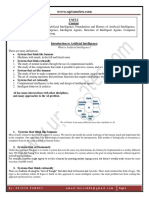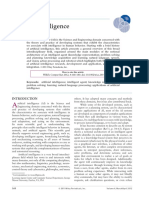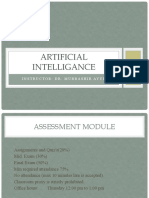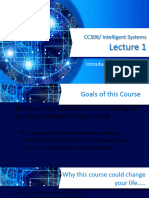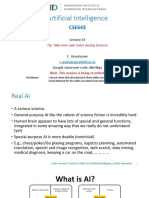0% found this document useful (0 votes)
32 views33 pages01 Introduction Annot
The document outlines the course 'Introduction to Artificial Intelligence' taught by Gerhard Lakemeyer at RWTH Aachen University for the Winter Term 2024/25, covering various AI concepts and techniques. Key topics include agent architectures, problem solving, knowledge representation, and learning, with a focus on rational action in AI systems. The course utilizes the textbook 'Artificial Intelligence: A Modern Approach' and includes a written exam and optional homework assignments.
Uploaded by
leimu.864Copyright
© © All Rights Reserved
We take content rights seriously. If you suspect this is your content, claim it here.
Available Formats
Download as PDF, TXT or read online on Scribd
0% found this document useful (0 votes)
32 views33 pages01 Introduction Annot
The document outlines the course 'Introduction to Artificial Intelligence' taught by Gerhard Lakemeyer at RWTH Aachen University for the Winter Term 2024/25, covering various AI concepts and techniques. Key topics include agent architectures, problem solving, knowledge representation, and learning, with a focus on rational action in AI systems. The course utilizes the textbook 'Artificial Intelligence: A Modern Approach' and includes a written exam and optional homework assignments.
Uploaded by
leimu.864Copyright
© © All Rights Reserved
We take content rights seriously. If you suspect this is your content, claim it here.
Available Formats
Download as PDF, TXT or read online on Scribd
/ 33

